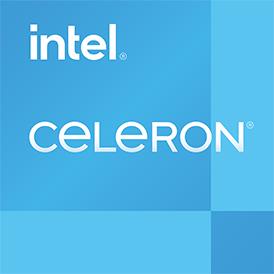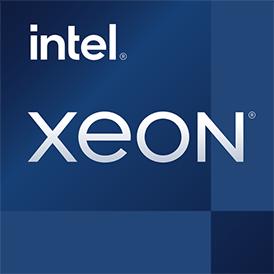 Geekbench 3, 64bit (Multi-Core)
Geekbench 3, 64bit (Multi-Core)
|
|
Intel Xeon E3-1240L v5
4C 8T @ 2.1 GHz
|
10217
|
|
|
Intel Celeron N2910
4C 4T @ 1.6 GHz
|
2180
|
 Estimated results for PassMark CPU Mark
Estimated results for PassMark CPU Mark
|
|
Intel Xeon E3-1240L v5
4C 8T @ 2.1 GHz
|
6189
|
|
|
Intel Celeron N2910
4C 4T @ 1.6 GHz
|
772
|
 Geekbench 3, 64bit (Single-Core)
Geekbench 3, 64bit (Single-Core)
|
|
Intel Xeon E3-1240L v5
4C 8T @ 2.1 GHz
|
3629
|
|
|
Intel Celeron N2910
4C 4T @ 1.6 GHz
|
680
|
 Geekbench 5, 64bit (Multi-Core)
Geekbench 5, 64bit (Multi-Core)
|
|
Intel Xeon E3-1240L v5
4C 8T @ 2.1 GHz
|
3356
|
|
|
Intel Celeron N2910
4C 4T @ 1.6 GHz
|
555
|
 Geekbench 5, 64bit (Single-Core)
Geekbench 5, 64bit (Single-Core)
|
|
Intel Xeon E3-1240L v5
4C 8T @ 2.1 GHz
|
932
|
|
|
Intel Celeron N2910
4C 4T @ 1.6 GHz
|
154
|
 Cinebench R15 (Multi-Core)
Cinebench R15 (Multi-Core)
|
|
Intel Xeon E3-1240L v5
4C 8T @ 2.1 GHz
|
533
|
|
|
Intel Celeron N2910
4C 4T @ 1.6 GHz
|
97
|
 Cinebench R15 (Single-Core)
Cinebench R15 (Single-Core)
|
|
Intel Xeon E3-1240L v5
4C 8T @ 2.1 GHz
|
138
|
|
|
Intel Celeron N2910
4C 4T @ 1.6 GHz
|
26
|
 iGPU - FP32 Performance (Single-precision GFLOPS)
iGPU - FP32 Performance (Single-precision GFLOPS)
|
|
Intel Celeron N2910
4C 4T @ 1.6 GHz
|
48
|
 Cinebench R11.5, 64bit (iGPU, OpenGL)
Cinebench R11.5, 64bit (iGPU, OpenGL)
|
|
Intel Xeon E3-1240L v5
4C 8T @ 2.1 GHz
|
12.6
|
|
|
Intel Celeron N2910
4C 4T @ 1.6 GHz
|
8.7
|
 Cinebench R11.5, 64bit (Multi-Core)
Cinebench R11.5, 64bit (Multi-Core)
|
|
Intel Xeon E3-1240L v5
4C 8T @ 2.1 GHz
|
6.0
|
|
|
Intel Celeron N2910
4C 4T @ 1.6 GHz
|
1.1
|
 Cinebench R11.5, 64bit (Single-Core)
Cinebench R11.5, 64bit (Single-Core)
|
|
Intel Xeon E3-1240L v5
4C 8T @ 2.1 GHz
|
1.7
|
|
|
Intel Celeron N2910
4C 4T @ 1.6 GHz
|
0.3
|

